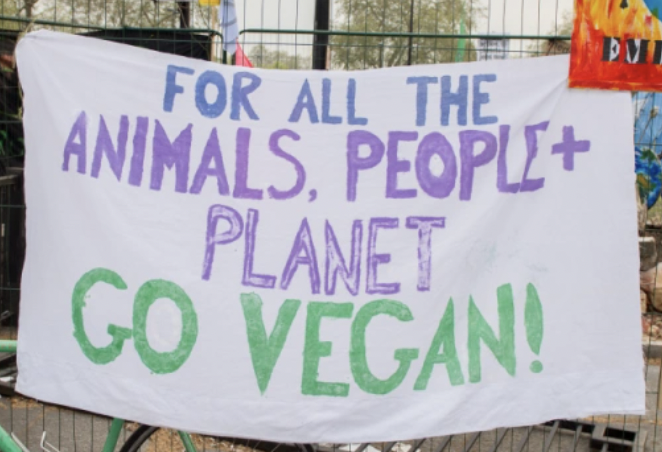Life on the vedge
December 12, 2022
“I’m not going to eat meat anymore,” I told my mom in a taxi on our way to the airport. “It’s not fair to the animals.”
A few days before this declaration, I had discovered an undercover investigation on YouTube. I sat there horrified as I watched cows struggling and fighting to survive as other cows waited in line for their turn to be slaughtered. At 8-years-old, I came to the conclusion that contributing to this inhumane practice wasn’t for me and never would be.
I know a lot of kids who went vegetarian out of their love for animals, but for most of them, it only lasted a couple of weeks at most. For some reason, I never looked back and to this day, I have remained passionate about my decision.
Over the years, I leaned into my interests and learned more about animal agriculture and the suffering of animals in the meat and dairy industry. So, just as I decided to go vegetarian at 8 years old, I decided to go vegan at 15. At the time, I thought the biggest challenge would be abstaining from dairy and eggs, but I soon discovered I was mistaken.
The hardest part is simply having to move through society as a vegan. It’s not necessarily because of how others view vegans, albeit many stereotypes exist. But for me, many of the initial challenges of being vegan for ethical reasons came from the shift in how I perceived the world around me.
While there were many changes to my life when I became a vegan, one of the larger and more surprising changes was the shift in how I thought about the concept of a community. At first, I heard a lot about the kind and compassionate people in the “vegan community.” I assumed, as vegans, we shared the same values. However, as I met more vegans and experienced the community more significantly over time, I realized the naivety of my previous views.
The members of the vegan community who are the most outspoken are generally those who are the most angry and radical. And for a while, I viewed them as how vegans were “supposed” to act, and I, like so many others, got caught up in their negativity and anger.
After my sophomore year, I decided to spend some time with the animals I had spent so much of my life advocating for, so I participated in a two-month internship at Woodstock Farm Sanctuary. Here, I lived with the beautiful animals I had admired from afar. Those two months, while filled with hard work, went by fast. But in that time, I learned more about myself and my goals than I could ever imagine. I didn’t learn through facts, statistics, or angry videos on the internet, but instead through the love, trust, and individuality that was present every day in the animal friends I had made: the times I spent sitting and reading with Tai the turkey, the nights I laid in the pasture and watched the sunset with Cliff, and the moments of being chased around by Stella the goat. Spending two months surrounded by these animals showed me the flaws in how so many vegans think.
I view the vegan movement as a social justice movement, one that seeks to spread compassion and love not just to humans but to non-human animals as well. So often, however, this is different from how we, vegans, present it. Instead, ego, superiority, and competition often taint the movement. The farm animals, who I consider to be my friends, taught me a very valuable lesson: a movement about love cannot be furthered through actions of hate and anger.
My journey as a vegan has been interesting, to say the least, and it has led me to meet some incredible people and has also changed how I view the world. Veganism has taught me to be independent and strong-willed and its principles have become a large part of my identity. But, the most important thing I have learned is the dangers of basing your identity on the views of others. We are all individuals with unique ideas and thoughts, and no single community can fully encapsulate who we truly are.

